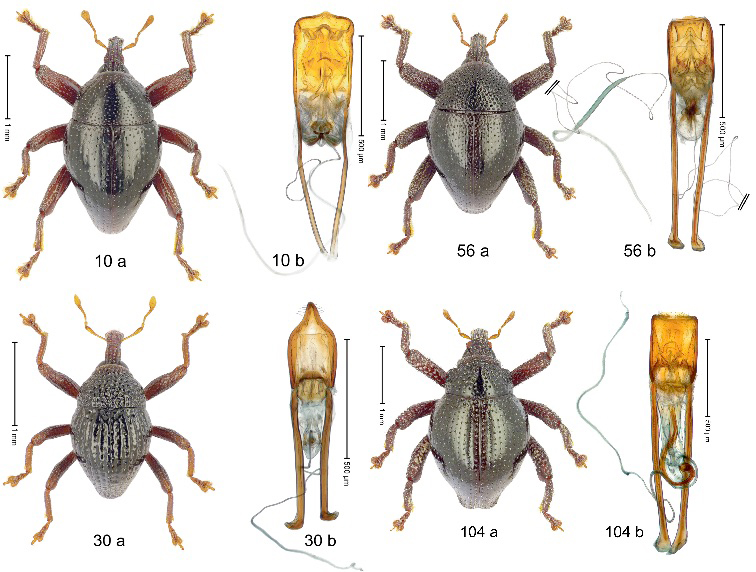Alexander Riedel, an entomologist at the Museum of Natural History of Karlsruhe in Germany, recently discovered 103 new species of beetles on the Indonesian island of Sulawesi just East of Borneo.
There were initially only 341 of beetle species there until Riedel found the other 103 weevils.
With over a hundred Trigonopterus beetles to name of the genus of flightless weevils, Riedel got rather creative and fell back on some classic childhood cartoons and films. He named and described each beetle together with the study co-author, Raden Pramesa Narakusumo, in a journal article published yesterday (7 March 2019).

Images from Riedel and Narakusumo, compiled by Gabrielle Jacobs
Some of them have seemingly normal names, like Trigonopterus volcanorum, a weevil that is found on active volcanoes, according to Popular Science, and then some with names like T. inhonestus and T. hyprocritus.
He even named two after his daughter and wife: T. jasminae and T. prismae, but others were called Trigonopterus asterix (10a, 10b), T. obelix (56a, 56b) and T. idefix – originally the name of Dogmatix from the French comic series Asterix (30a, 30b).
Our favourite, however, is Trigonopterus yoda (104a, 104b), a beetle with very little resemblance to the sage, green Star Wars character, nor the other beetles, according to us mere mortals.
‘We should have an idea of what other creatures we share the planet with,’ Riedel told the scientific website. He hopes to check out New Guinea next, which is reportedly teeming with diverse species.
Citation:
Riedel A, Narakusumo RP (2019) One hundred and three new species of Trigonopterus weevils from Sulawesi. ZooKeys 828: 1-153. doi.org/10.3897/zookeys.828.32200
You may also like
Related Posts
China’s National Health Commission has published a list of controversial coronavirus treatments that have animal...
read more
Warmer sea temperatures in the summer months, especially in February, were recorded and are believed...
read more
While people are stuck indoors due to the coronavirus pandemic, the penguins at the Two...
read more